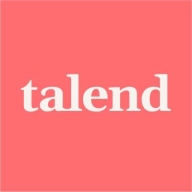


Find out what your peers are saying about Microsoft, Informatica, Talend and others in Data Integration.
It also plays a vital role in revenue calculations, net asset valuations, and other key factors that support customer data and investment data pipelines.
The tool has made us tremendously more efficient and saved us a significant amount of money.
Using SSIS has proven cost-effective as there are no additional fees outside the SQL Server license, and it significantly enhances data management efficiency.
We actually achieved the first 18 months worth of work in the first six months.
I like the technical support provided by Informatica.
I have occasionally needed to communicate with the technical support of Informatica PowerCenter, especially when raising cases for complex mappings and performance optimization to identify bottlenecks in transformations.
The first line of support needs to be more knowledgeable.
In the cloud, scaling up and down becomes easy when working with cloud providers.
For scalability, I would rate Informatica PowerCenter between eight to nine.
Informatica PowerCenter is stable and can scale well.
The product is very stable with very few issues encountered in production.
It processes large volumes of data quickly.
We have not encountered many issues with remote engines, and the interfaces are properly developed.
With Informatica PowerCenter, I am looking for an AI interface that looks at the underlying data model of the databases and the metadata of the tables, allowing the developer to provide instructions on what data sources to connect to and how to apply or create Transformations.
Utilizing more stored procedures from Oracle databases in an easy way would significantly boost performance.
Informatica Cloud and its support becomes quite expensive for the organization compared to peers such as SnapLogic or Netezza, which offer lower pricing.
Within the South African context, if you are getting your enterprise agreement from First Technology, they don't provide support.
SSIS has a difficult learning curve when dealing with complex transformations.
The logging capabilities could be improved, particularly for error logging.
On the flip side, that is one of its amazing strengths, as you are not locked into a very rigid way of doing something.
Data management could also encompass APIs and real-time streaming data integration.
I find that the pricing and licensing for Informatica PowerCenter align with its quality.
The price of Informatica PowerCenter is high, especially for small and medium-sized businesses.
Utilizing SSIS involves no extra charges beyond the SQL Server license.
It was included in our licensing for SQL server, and our licensing for SQL server was extremely cheap, making it a very good price point for us.
The system supports real-time integration, which is essential for many of my tasks.
The functions in Informatica PowerCenter that I have found most valuable are the way it manages the volume of data, the push down optimization, and the performance aspects of it, mostly related to parallelism techniques.
The most valuable features of Informatica PowerCenter that I have found so far include transformations, the ease of connectivity with different source systems, and the parameter files.
I would rate it at a 10 as it is highly reliable; we have never had any problems with it.
One of the best aspects of SSIS is that it is built into Microsoft SQL Server, so there are no additional costs involved.
SSAS is included in the base installation of SQL Server.
I have successfully requested the necessary patch from Talend support multiple times to align different studio versions across the team of developers.
| Product | Market Share (%) |
|---|---|
| SSIS | 5.9% |
| Informatica PowerCenter | 6.3% |
| Talend Data Management Platform | 1.0% |
| Other | 86.8% |



| Company Size | Count |
|---|---|
| Small Business | 15 |
| Midsize Enterprise | 10 |
| Large Enterprise | 72 |
| Company Size | Count |
|---|---|
| Small Business | 26 |
| Midsize Enterprise | 19 |
| Large Enterprise | 57 |
| Company Size | Count |
|---|---|
| Small Business | 9 |
| Midsize Enterprise | 5 |
| Large Enterprise | 8 |
Informatica PowerCenter is a data integration and data visualization tool. The solution works as an enterprise data integration platform that helps organizations access, transform, and integrate data from various systems. The product is designed to support companies in the full cycle of a project, from its initial rollout to critical deployments. Informatica PowerCenter allows developers and analysts to collaborate while accelerating the work process to deploy projects within days instead of months.
The Advanced edition of the product provides an additional real-time engine which allows companies to have always-on enterprise data integration. This ensures seamless collaboration and increment of data lineage visibility and impacts analysis.
The Premium edition of the solution offers an early warning system that detects unexpected behaviors or incorrect utilization of resources in the workflows and alerts companies in the case that these occur. This version of the product also offers automatic data validation, which ensures data accuracy and reduces testing time and expenditure of resources for by up to 90%.
Informatica PowerCenter Features
The product provides users with various features which allow them to execute data integration initiatives such as analytics, data warehousing, data governance, consolidation, and application migration. The features of the solution include:
Informatica PowerCenter Benefits
The benefits of using Informatica PowerCenter include:
Reviews from Real Users
Yahya T., a developer and architect at L'Oreal, says the product is stable, provides good support, and integrating it with other systems is very fast.
Mohamed E., a senior manager for Data management and data governance at a tech company, says PowerCenter is stable, mature, and offers flexibility in building the pipeline and has a drag-and-drop mode because it's GUI-based; technical support is brilliant.
SSIS is a versatile tool for data integration tasks like ETL processes, data migration, and real-time data processing. Users appreciate its ease of use, data transformation tools, scheduling capabilities, and extensive connectivity options. It enhances productivity and efficiency within organizations by streamlining data-related processes and improving data quality and consistency.